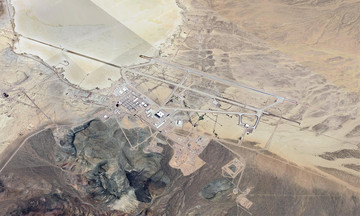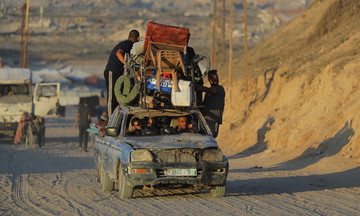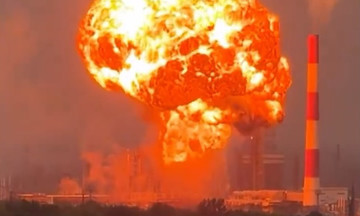Russia and Belarus conducted the Zapad 2025 joint military exercises from 12/9 to 16/9. The drills took place across various training grounds and maritime areas, including locations near the border of Poland, a NATO member. The exercises, involving ground, air, and naval forces, were divided into two main phases, focusing on maneuvering combat groups to ensure the security of the Union State of Russia and Belarus.
On 14/9, the Russian Ministry of Defense released a video showing the frigate Admiral Golovko launching a Zircon hypersonic missile, successfully hitting a sea target. While not the first Zircon test, the timing and location, close to NATO territory amid heightened tensions over the war in Ukraine, drew considerable attention.
Kirill Shamiev, a Russia military expert at the European Council on Foreign Relations, suggested Moscow is engaging in "steel diplomacy" by showcasing its hypersonic missile capabilities. "This act aims to demonstrate the most advanced defense capabilities and their operational methods in the current security environment," Shamiev said.
A Russian warship launches a Zircon hypersonic missile in the Barents Sea on 14/9. Video: Zvezda
Zapad 2025 marked the first joint military exercise between Russia and Belarus since the Russia-Ukraine conflict began over three years ago. The West has long viewed the Zapad exercises as a platform for Moscow to display its military might, both domestically and internationally.
"Russia and Belarus have several strategic goals for this exercise," Hanna Liubakova, an independent Belarusian journalist, told Sky News. "Demonstrating military capabilities, showing deterrence, and of course, probing how the adversary will react."
Hypersonic missiles travel at least five times the speed of sound (Mach 5) and are highly maneuverable, making them difficult to intercept. Russia has deployed and used hypersonic missiles like the Kinzhal and Zircon. Several other countries have also developed or possess this type of weapon.
Russian President Vladimir Putin first unveiled the Zircon missile in a February 2019 speech, stating it could strike sea and ground targets within a 1,000 km range at Mach 9.
Russia first test-fired the Zircon in October 2020 and conducted 12 test launches from surface ships and submarines in 2021, all reportedly hitting their targets. The Russian military has also fired Zircon missiles at targets deep inside Ukraine on several occasions.
"The Zircon is a sea-launched missile. In other words, while the Kinzhal is launched from fighter jets, the Zircon is launched from warships and submarines. Their extremely high speed makes them virtually impossible to intercept," Russian military expert Yuri Knutov told aif.ru.
Knutov noted that because the Zircon is launched from ships at sea, it's almost impossible for adversaries to determine the launch timing.
"For example, with the Kinzhal, when a squadron of MiG-31 fighter jets takes off, US satellites relay the information to Ukraine, giving them time to respond. The Zircon is different. The underwater launch, combined with hypersonic speed and extremely short flight time, leaves the enemy with virtually no time to react," Knutov emphasized.
Along with deploying Iskander ballistic missile batteries near Kaliningrad during Zapad 2025, Knutov believes Russia aims to send a deterrent message to "cool down some hot heads in NATO."
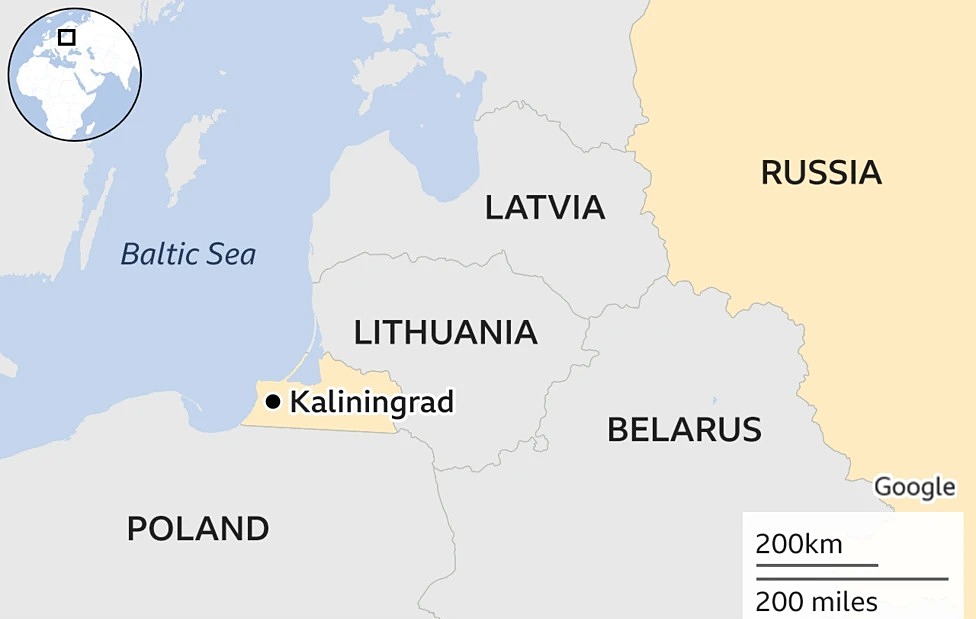 |
Location of Russia, Belarus, and the Russian territory of Kaliningrad. Graphic: BBC |
Location of Russia, Belarus, and the Russian territory of Kaliningrad. Graphic: BBC
Through Zapad 2025, Russia also appears to be emphasizing its alliance with Belarus, showcasing their increasingly close military ties amid ongoing tensions related to the conflict in Ukraine. Belarus is currently under Western sanctions for allowing Russia to use its territory to launch the attack on Ukraine in February 2022.
Russia has deployed tactical nuclear weapons in Belarus following a 2023 agreement between the two countries. President Alexander Lukashenko claimed at the time that the West was "plotting to invade Belarus," and that Russia's deployment of tactical nuclear weapons would help protect the country from threats.
Zapad 2025 included exercises simulating decision-making processes related to the use of Russian nuclear weapons and medium-range missiles capable of carrying nuclear warheads, which Moscow has promised to supply to Minsk. Russia has not disclosed the number of tactical nuclear weapons it has deployed to Belarus, but President Lukashenko stated last December that Belarus possessed "several dozen" warheads.
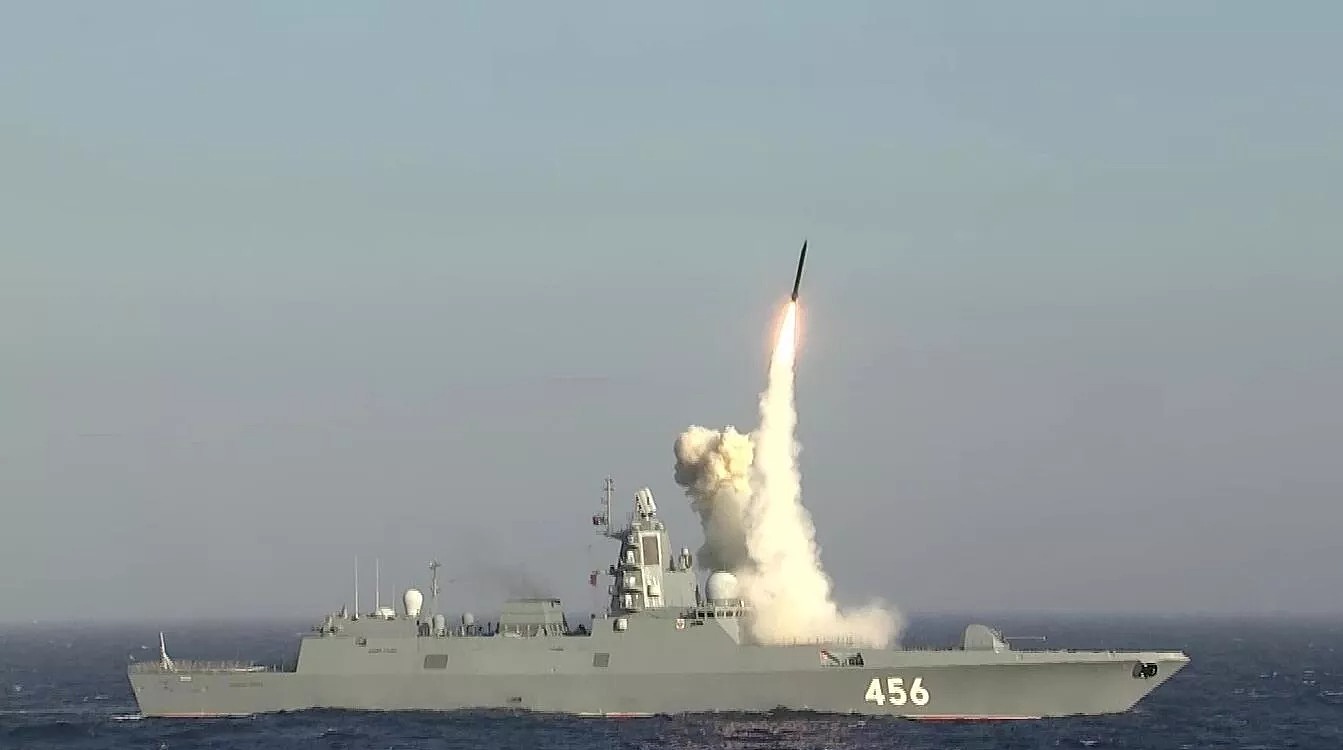 |
The frigate Admiral Golovko launches a Kalibr cruise missile in the Barents Sea in September 2024. Photo: RIA Novosti |
The frigate Admiral Golovko launches a Kalibr cruise missile in the Barents Sea in September 2024. Photo: RIA Novosti
In response, the West will likely demonstrate its own capabilities to counter Russia, given the hypersonic missile launch near a member state's territory, observers say.
"Russia clearly wants us to see their power. We will also demonstrate that we are always ready to act," said General Kaspars Pudans, chief of defense of Latvia, which borders both Russia and Belarus.
Poland, Latvia, and Lithuania have held their own military exercises. Germany contributed approximately 8,000 troops to the Quadriga 2025 exercise taking place in the Baltic region and Finland. German Chief of Staff Carsten Breuer previously stated that NATO exercises would be held concurrently with Zapad as a warning to Russia against escalating tensions.
Meanwhile, Russia dismissed suggestions that Zapad 2025 was an act of aggression.
"This is a routine training activity, not aimed at anyone," Kremlin spokesman Dmitry Peskov said. "The goal is to continue defense cooperation and strengthen coordination between the two strategic allies."
Nhu Tam (Moscow Times, Sky News, Reuters)





